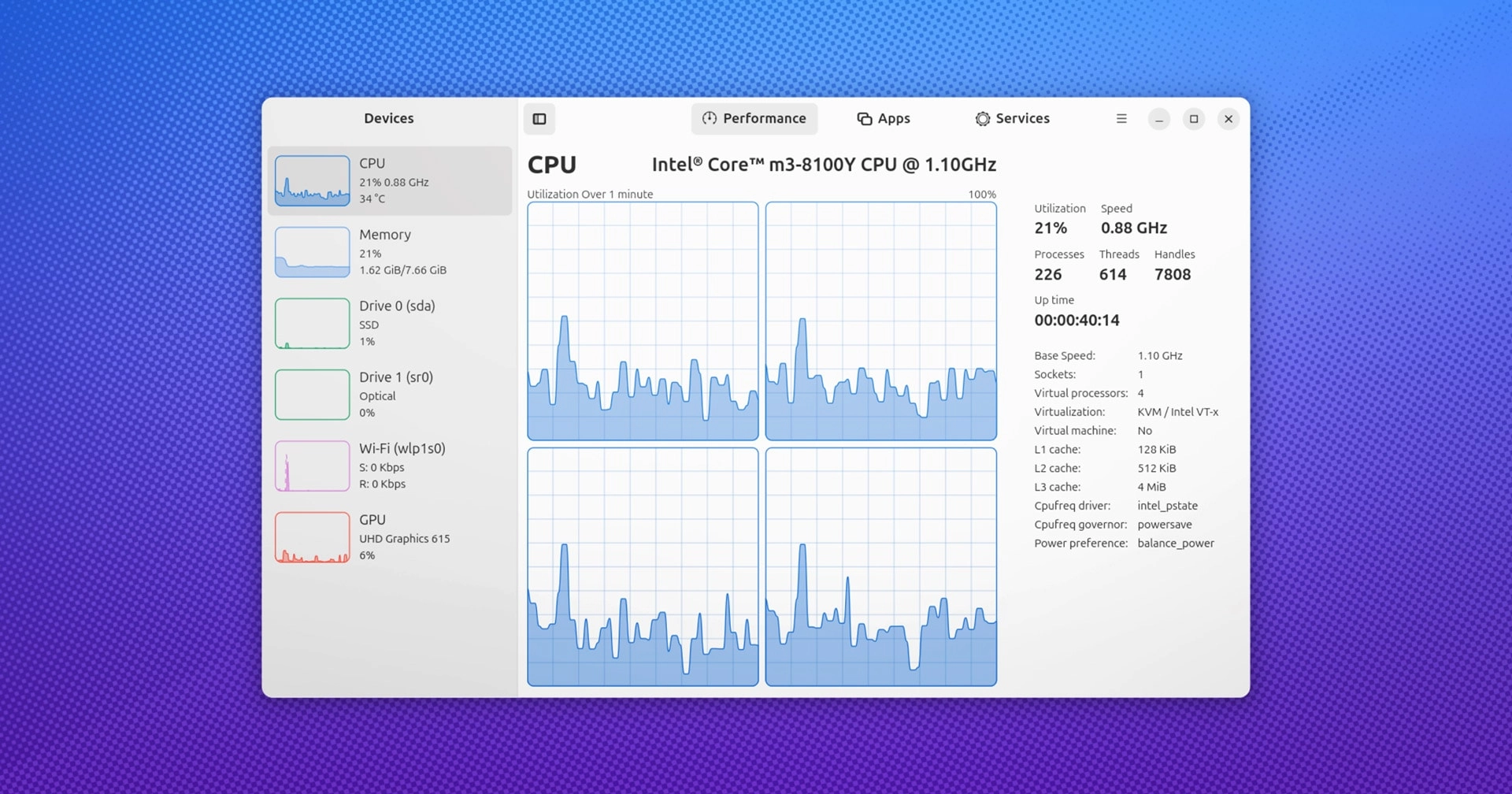The latest iteration of Mission Center, a highly efficient system monitor for Linux, has just been launched.
On numerous occasions, I have discussed this utility (both here and on OMG! Linux), so regular readers of these blogs—clearly a discerning crowd—might already recognize it.
For those who haven’t discovered it yet, prepare to be impressed.
Among the plethora of system monitors available for Linux, Mission Center stands out as a top choice for enthusiasts who prefer a graphical interface to manage their system’s CPU and RAM metrics.
Mission Center tracks a variety of system parameters including per-thread CPU or overall CPU usage, memory and swap space, disk activity and transfer rates, network traffic, and GPU statistics like encode/decode activities, memory allocation, power usage, and temperature.
Furthermore, it aggregates detailed specs such as CPU series/model and clock rates, network adapter information including name, frequency, and IP address, all displayed within its interface, eliminating the need to use separate system information tools or command-line utilities.
The application features an integrated process monitor, enabling users to identify which applications and services are consuming system resources.
While these functionalities have been integral to Mission Center for some time, new enhancements have been implemented since my last discussion about Mission Center in the previous year.
Mission Center’s New Features
The most recent update, version 1.5, introduces a new Services page. This feature enables the visualization and management of system services through systemd or OpenRC. The interface adaply hides this section if it detects an unsupported service manager. Additional details about each service can be viewed through a pop-up info section.
The Mission Center platform is known for its extensive use of graphs. The update enhances this feature by offering more detailed customization options for refresh intervals and data point configurations on charts. Additionally, an option to create smoother graphs has been implemented to reduce data volatility in visual representations.
Support for hot-plugging devices, like external drives and Wi-Fi adapters, is also featured, allowing for seamless monitoring without the need to restart the application. A new functionality now includes monitoring the usage of optical drives, adding more versatility to the tool.
The CPU area now displays the frequency governor and driver (if supported), in addition to its already comprehensive processor information statistics:
Several bugs have been fixed, VR,AM usage has decreased, and numerous minor UI and UX adjustments have been made for improved consistency in appearance and functionality.
The Mission Center homepage contains additional information about this application, which is developed using Rust and GTK4/libadwaita.
Get Mission Center on Ubuntu
You can get Mission Center on Flathub.
For a portable solution, you can also download an official AppImage from the releases page on the Mission Center Gitlab.
Remember you need to do a few things to get AppImages to work in Ubuntu 23.10 and above, and be aware some AppThe latest LTS regarding AppArmor changes may affect the functionality of AppImages.
Thanks Romeo!
- Experimental; how much info the GPU panel is able to show can vary between GPU models and OEMs
